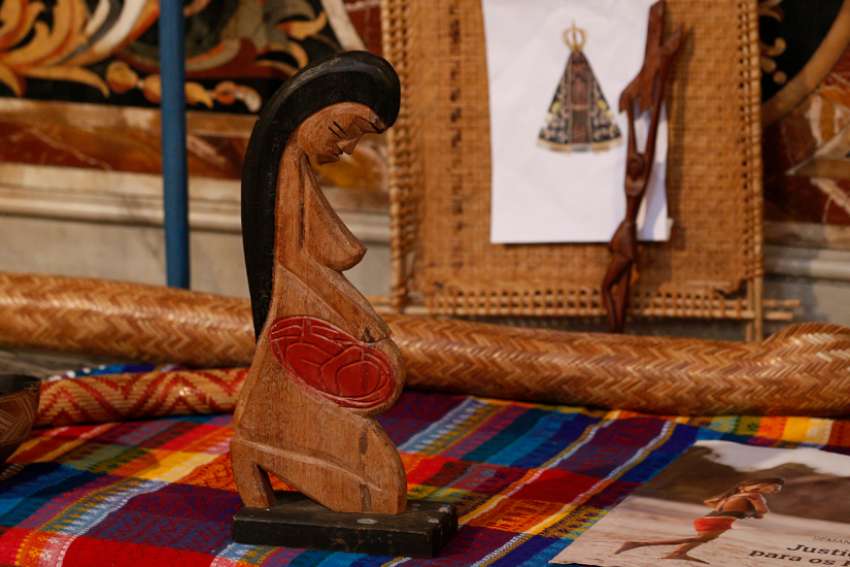As our staff gathered for the start of a team meeting, the statuette gave witness to our morning prayer, written by the missionary sisters of St. Charles Borromeo:
“To have hope is to be a messenger of God and courier of men and women of good will, tearing down walls, destroying borders, building bridges. To have hope is to believe in the revolutionary potential of faith, is to leave the door open so that the Spirit can enter and make all things anew.”
It is an Advent image. It is an Advent prayer.
The statuette stays with us during the meeting, just as one was present during October’s synod on the Amazon. This particular one comes from the exact same place in Brazil as those ones did.
CIMI is linked to the National Bishops Conference of Brazil and works with more than 180 Indigenous peoples in 26 states and five regions of Brazil.
I am aware of the controversy that the statuette generated in Rome. There has been no shortage of noise. American journalist John Allen Jr. called it “the new insider Catholic version of ‘Who am I to judge?’ meaning a single word or phrase which, immediately upon utterance in front of another Catholic, whatever comes across their face will tell you everything you need to know about where he or she stands.”
Reflecting on where we are called to stand, I was touched by the words shared by a colleague from our friend and partner, Fr. Dario Bossi. Dario is the co-ordinator of the Cambonian Missionaries in Brazil and I quote his words at length because they bear repeating.
He encourages us to: “reflect on the relationship between Gospel, religion and cultures. The Gospel was born at the heart of a specific culture of Palestine. It adapted and acquired forms and expressions of Greek culture first, and then Roman. Around this Gospel, a religious form has been consolidated with Latin and Western cultural characteristics.
“It accepted and integrated elements, symbols, gestures and traditions of other cultures, considered ‘pagan,’ such as the use of temples dedicated to saints and decorated with tree branches, incense, lamps and candles, ex voto offerings for the cure of a disease, holy water, feasts and liturgical cycles, use of calendars, processions, blessings of the fields, priestly garments, head shaving, use of a ring in marriage, people look east, images, ecclesiastical singing and the Kyrie Eleison.
“However, in a world that increasingly opens us to the plurality of intercultural encounters, some fundamentalist Catholics advocate a ‘pure’ religion that is not ‘contaminated’ by elements of other cultures, demonizes them and exorcizes them.
“Behind this defence, in a moment of precariousness and uncertainty about the future, is the fear of losing other certainties. They cling to their convictions, without realizing the serious danger of spiritual asphyxia and racism in their positions.”
Yes, there is a lot of noise. But the statuette is beside me in the meeting room as I write and it is quiet. She is simply, as Dario says, “an object of common craftsmanship, produced in the Amazon by local artists, shared as a symbol of life and fertility: a wooden statue representing a pregnant Indigenous woman.”
I know where she came from. I know the suffering of the people she speaks to and their courage in caring for our common home. And that is enough to assist me in my prayer and work.
In the quiet, the Holy Spirit speaks, “be not afraid.” I gaze on the statuette in quiet contemplation and the words of Pope Francis at the close of the synod echo through my heart, “Only what we live can we proclaim … we must go beyond ourselves ... leave our safe harbours” and enter “the open sea where the Spirit invites us to cast our nets.”
(Stocking is Development and Peace Deputy Director of Public Engagement, Ontario and Atlantic Regions.)


